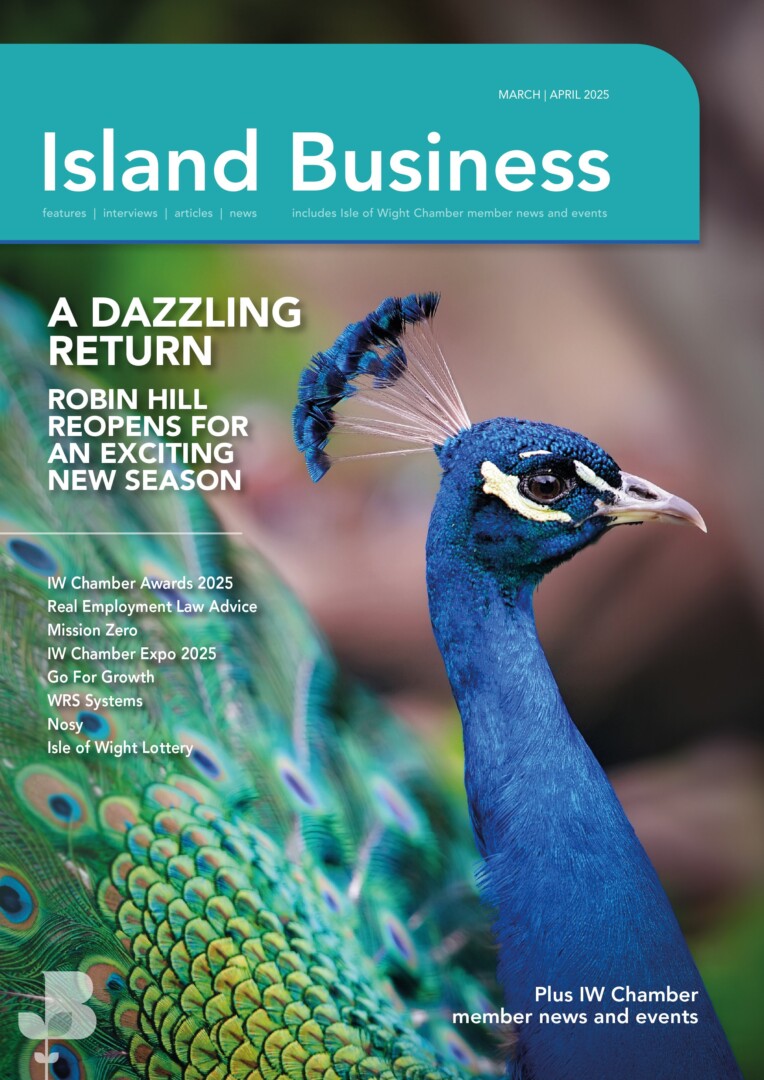Bryn Jones looks after the marketing budgets for Osborne, Carisbrooke Castle and Yarmouth Castle along with mainland properties like Porchester Castle and others in English Heritage’s central southern region.
How’s business? I’d imagine that with the resurgence of interest in the Royal Family this must be a good time for Osborne.
Yes. The Jubilee was very good for us and we’re trying to stay on that bandwagon! Prince George and Princess Charlotte are Victoria’s great, great, great, great grandchildren so there’s a historical link with Osborne and the present royal family. We occasionally get royal visits here as well.
How differently would these properties perform if they were on the mainland? Is there an “Isle of Wight” factor with membership?
There is. We currently get 241,000 visitors a year at Osborne and our aim is to get a quarter of a million. I do think that if we were based on the mainland we’d be looking at in excess of 300,000. If you compare us with other royal palaces like Rutland they definitely are able to benefit from more mainland visitors. My aim is to try and get the message across that we are an easy day or overnight trip from London.
Weirdly Osborne is actually one of the top sellers of English Heritage membership in the country. I think that’s because it’s good value for money and if holidaymakers are here for a week and want to visit Osborne and Carisbrooke it makes better financial sense for them to join as a family. Once they’ve joined we want them to return time and time again and make the most of their membership. Now that we’ve opened the beach at Osborne we are seeing that, with Islanders in particular. Families are using us as a recreational resource rather than just a tourist attraction. They’ll come here specifically to visit the beach on a nice day. It’s not the crowd that we used to have – people bring their inflatables with them now! There’s a conscious effort to invest in Osborne now to make it more family friendly and to appeal to a wider audience. Refurbishing the Swiss Cottage has helped to reinforce that it was a happy family home for the royal children.
Where does English Heritage sit in the local business community?
On an island we try to source things much closely to us than our colleagues on the mainland would do. Realistically it’s far cheaper and quicker to do that too. Local landscape gardeners were employed at Swiss Cottage. Local builders and architects were used in the restoration and opening of Sovereign’s Lodge as a holiday cottage.
There is a lot of specification and a tendering process with the building and conversion work. All the artefacts here at Osborne are from the Royal Collection and aren’t owned by English Heritage. There are a lot of rules and regulations regarding security and lighting and some of the work is highly specific using contractors from Europe or even further afield. If somebody on the Island could match the specification and the price we’d go with them but realistically we have to look at it in a more global sense.
We do employ a lot of people and to a certain extent we offer year round employment. We try and operate for twelve months, which is hard on the Island. This winter we’re opening Wednesdays and at weekends. We do employ a lot more in the summer months, rising to around 80 positions at Osborne. It’s important that we’re a thriving business and it’s important to the economy too. Everybody that comes here spends money on-site but also on the Island too.
You have the same challenge as any other attraction, which is persuading people to come back regularly…
A lot of our marketing revolves around our events, refreshing the attractions and the reasons for people to visit. Events help to raise our mainland profile too. Our Victoria’s Fabulous Fete at the end of May lived up to its name and we had more than 8,500 visitors over three days.
Once people are here we want them to go away and tell people about how we’re very good value for money. We’re promoting ourselves as a full ‘day out’, including the beach and gardens, and our rating on TripAdvisor is excellent. There were murmurings that we should offer a ‘grounds only’ ticket for Osborne and make it cheaper for residents but my argument is that English Heritage membership is very good value for money and that’s the way we want to promote it. Once you’re a member you can come time and time again, including all the events.
Do you have a particular audience and do you think Island visitors are changing?
In the historic attractions sector we’ve always had a fairly discerning customer. Even families aren’t just looking for pure entertainment. They’re looking for learning experiences for their children too and I think we’re getting more of the “new breed” of visitor. English Heritage is trying to work very hard to dispel any perception that we are stuffy or fuddy duddy. We don’t fit in with some of the festival or lifestyle promotions and we have to be careful that we don’t abandon our older, traditional markets. We get a lot of groups and coaches here throughout the year. They sustain us in terms of volume, even if they don’t spend huge amounts of money.
One of the problems that we have on the Island is that accommodation isn’t quite matching visitor expectations and we don’t quite have the trendy places to come and stay that other locations have. There’s quite a lot of middle-market, down-at-heel accommodation that needs upgrading. I know it’s difficult but that needs to happen in order to attract new markets.
Protecting the properties must constrain the things you can do with the business at times. Is that a challenge?
Yes. There’s often a conflict between the historical aspects of English Heritage’s work and the commercial aspect. We’re trying to make it a thriving business within that context. English Heritage is a bit different to other historic attractions in that everything has to be authentic and historically correct. An event like Victoria’s Fabulous Fete or the jousting at Carisbrooke Castle will always be grounded in history.
Having said that, we are a venue and we host meetings, wedding receptions and also large-scale hospitality and events. Within certain constraints those third parties use us as a venue and the pop concerts like Tom Jones are the most popular things that we do at Osborne. Unfortunately they aren’t happening this year but we have got open-air cinema and theatre in the summer instead.
The newly refurbished Durbar Room can be used for functions and we have other rooms dedicated to meetings and corporate functions. We’d like to do more of that. The restaurant is capable of taking around a hundred people. Osborne has a lot of potential, especially in the winter months, when we can offer away-days for hospitality, working with other companies to create packages where visitors can meet here and experience the Island too. I think we need to do a lot more on that side.
How do you see the attractions sector on the Island? It’s competitive but the sector has to perform as a whole doesn’t it?
We’re board members of Visit Isle of Wight and we contribute quite a lot to the marketing and promotion of the Island as a whole, including being a part of the Island Exhibition Partnership. There’s no point in thinking that people will only come to Osborne as part of their stay and it’s important to try and promote the whole of the Island. Obviously costs are greater with the ferry travel and it’s important to build a notion of good value for money.
Having said that, the trend is for people to come on shorter two or three day breaks rather than a week’s holiday. My job is to make sure that we are the number 1 attraction that people visit first! The IW Steam Railway, the Needles, Robin Hill and Blackgang are my friends and we work with them but they are competition and I want people to visit them once they’ve been to Osborne, Carisbrooke Castle, Appuldurcombe and Yarmouth Castle first.
First published in the July 2015 issue of Island Business magazine.



